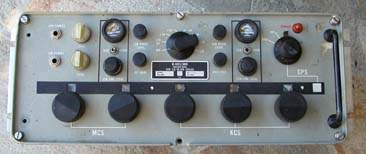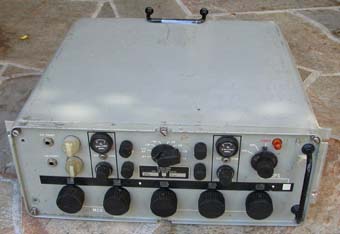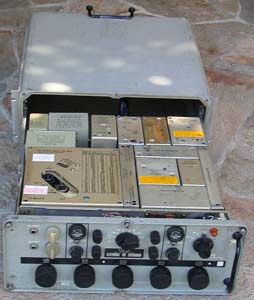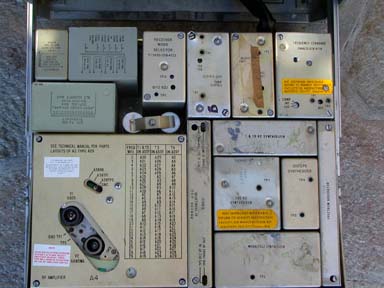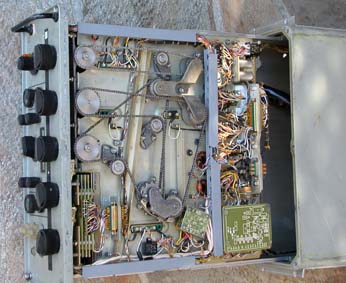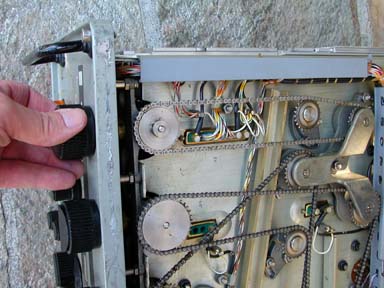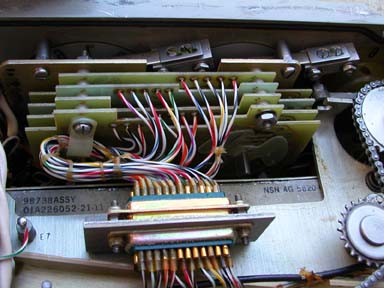R-1051 Page
|
I don't know quite why I am so fascinated with these receivers. They are terrible band-cruisers,
which is about all I do. You have to know exactly what frequency you want to listen to, and even then,
you can get a sprain trying to crank all those knobs around.
|
|
(repeat of caveat on boatanchor page)
|
Scanned R-1051 Manuals
As noted before, one of the most difficult parts of dealing with these old receivers is
finding the
appropriate manuals. Without schematics and other descriptions, it is a hopeless
task trying to repair these things. This receiver is worse than most. There are very few
of the original manuals around. I received this plausible explanation from Li Wha Ho Wally K5OP:
|
| Download 42MB |
Navships 0967-034-2000 "Repair of AN/WRC-1 and R-1051/URR 2N Modules" This is a 44-page manual on the repair of some of the modules in the R-1051. These are the RF amplifier, the frequency standard, and the translator/synthesizer. Hmm. There is not much left after these - the IF cans, I guess. It is 44 pages. It is not my scan, but I did go through and de-screen the halftone images. Thanks to Norman Dulebohn of Wapakoneta, Ohio for this manual. Thanks, Norm! |
| Download 70MB |
NAVELEX 0967-LP-970-9010 "Technical Manual: Maintenance Instructions, Radio Receiver R-1051/URR" This is the whole manual, with all the wide pages in the PDF right where they are in the physical manual. |
| Download 228MB |
NAVSHIPS 0967-970-9010 (Formerly NAVSHIPS 94841(A)) "Volume I: Technical Manual for Radio Receiver R-1051/URR and R-1051B/URR" dated 1969 This covers the R-1051 and R-1051B. The only difference, really, is that the "B"-model has a 100 Hz minimum frequency step whereas the original has a 500 Hz step. The 100 Hz step is REALLY, REALLY handy for SSB. |
|
Download 141MB
Wide Pages 206MB |
NAVSHIPS 0967-878-3010 "Volume I: Technical Manual for Radio Receiver R-1051D/URR" dated 1970 This covers the R-1051D. This one has crystal IF filters! Whew! The selectivity of the previous receivers was just awful. You can see the beginnings of the use of LSI here and there, but the frequency synthesizer is still all discrete-transistor flip-flops!. |
| Download 383MB |
EE125-AF-0MI-010/E110-R1051H "Technical Manual, Operation and Maintenance Instructions With Parts List, Organizational And Depot, Radio Receiver R-1051H/URR" Watch out! This one is huge. It is 660 pages with lots of them really, really big. This manual is specifically for the "H" model and may or may not have anything to do with the other models. That having been said, many parts are applicable to other models. For instance, this manual has many more drawings of the mechanical linkage among the turrets and motors, and that feature seems to be pretty consistent across the models. The "H" model is interesting in that it uses SSI and MSI logic. It is not exclusively discrete transistors. That notwithstanding, it still has the most baroque frequency selection scheme I've ever seen. Most of the circuitry is dedicated to frequency synthesis. This radio has four (count them - four!) consecutive mixers to get the input signal to the IF band. There can't have been many of these receivers built. Thanks to Cecil Acuff for the loan of his manual (for several months!) for me to scan. |
